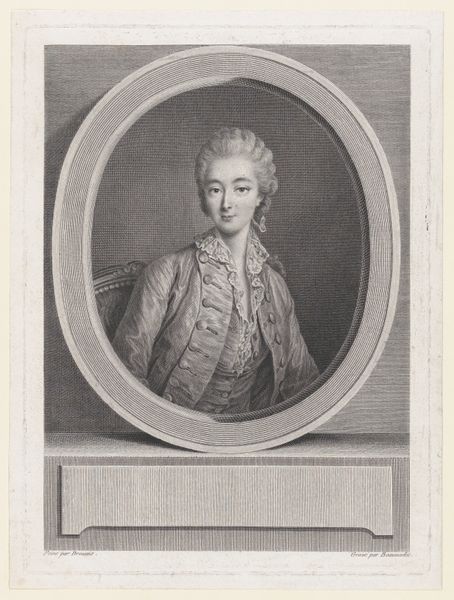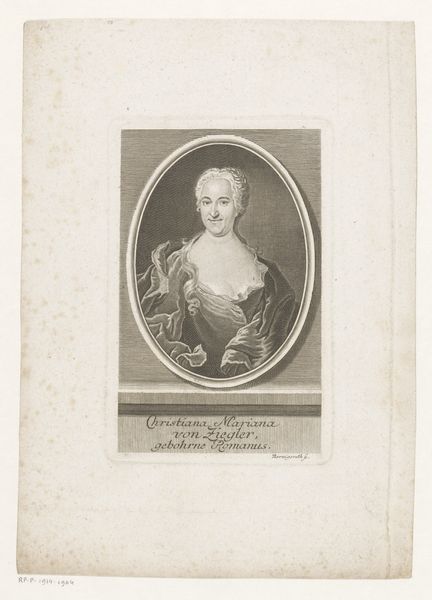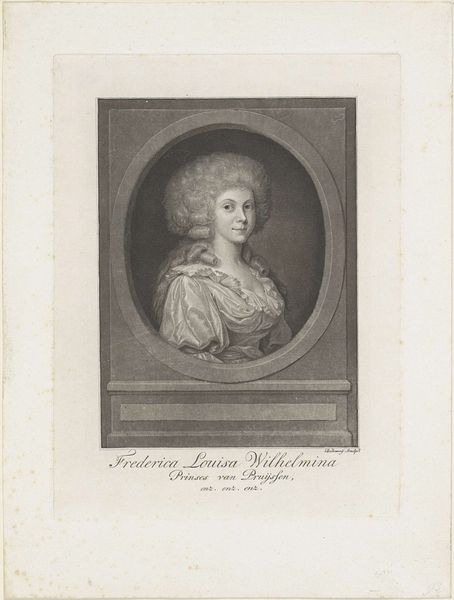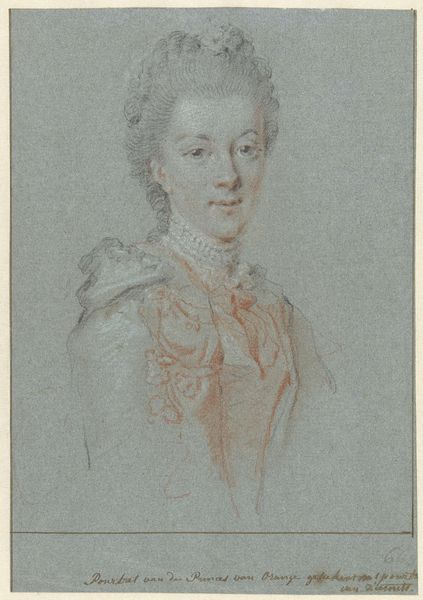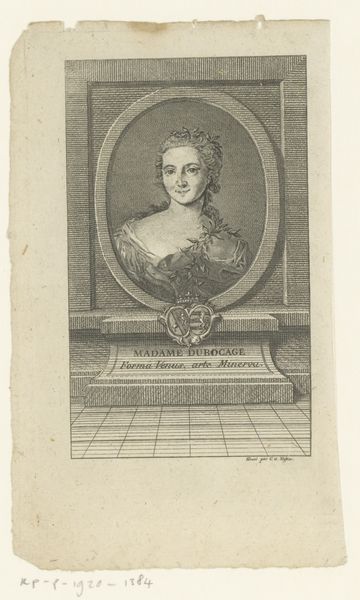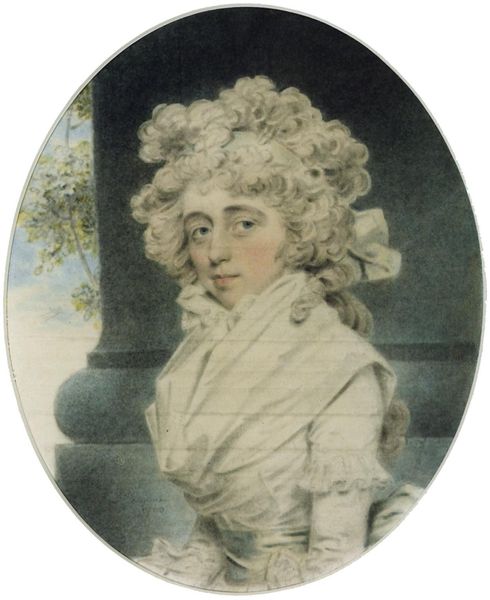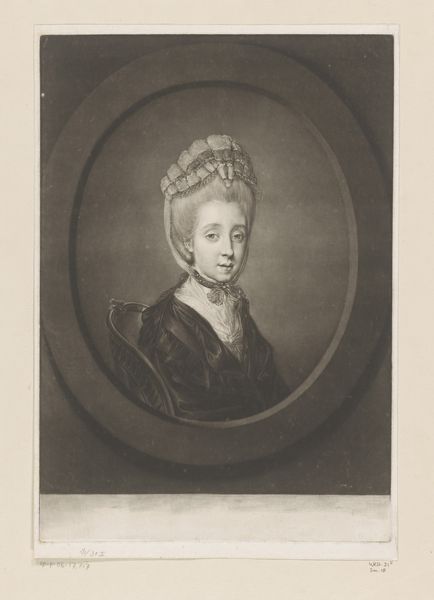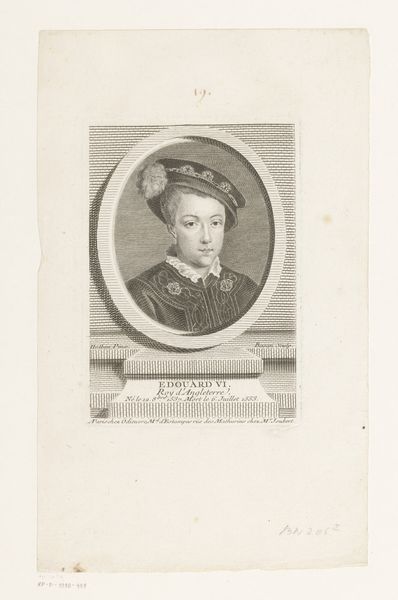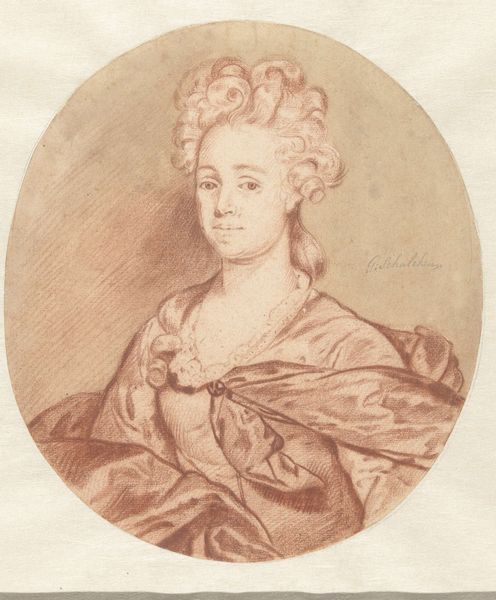
Dimensions: height 510 mm, width 389 mm
Copyright: Rijks Museum: Open Domain
Curator: This is an engraving titled "Portrait of Madame du Barry in a Hunting Costume" created between 1760 and 1793. It’s held at the Rijksmuseum. The artist is Louis Marin Bonnet. Editor: It possesses such a gentle, almost faded quality, with this warm, monochromatic palette and finely etched lines. There's a stillness that permeates it. The composition within the oval provides a frame that is immediately calming. Curator: Indeed, Bonnet has captured Madame du Barry in an interesting guise, a ‘hunting costume.’ We think of her usually in the finery and artifice of the French court. It hints at a deliberate attempt to connect her with a kind of active, perhaps even independent spirit. This connects to broader questions about representations of femininity in the late 18th century. Editor: The lines really define her facial structure, even in the softness of the overall tone. You’ll see there’s exquisite attention to detail in the frills of her collar and the subtle curves of her hair. And even though this print appears soft at first glance, the texture in the hair is actually tightly detailed with so much cross-hatching and parallel lines. Curator: The hunting costume would have been associated with aristocratic leisure and power, connecting Madame du Barry to these visual ideas. The clothing, though presented in engraving format, still provides an emblem of the nobility in pictorial form and would be recognized within her social and cultural circle. I see how these garments act as symbols. Editor: And do note, in a symbolic interpretation of sartorial display, her direct gaze towards the viewer. It gives the artwork more significance. We perceive this gaze directly connecting to the person within the portrait. It is, structurally speaking, also what defines our visual interaction. Curator: What's remarkable is how an engraving could convey the complexities of court life. We often view the image as art that connects visual signifiers across the ages to convey history. Madame du Barry herself carries the memory of a pivotal moment in European history. This engraving makes that palpable, more enduring, more immediate. Editor: Precisely. Focusing on formal and pictorial elements helps us realize its subtle brilliance and its powerful gaze from a moment that the work both exists within and extends beyond.
Comments
rijksmuseum about 2 years ago
⋮
Kings’ mistresses have always enjoyed a special status in France, as unofficial counsellors and patrons of the arts. The Comtesse du Barry, Louis XV’s last mistress, spent a lot of money on art as well. Her likeness by Drouais became so popular that Bonnet reproduced it in ‘crayon manner’, a printmaking technique that had just been patented, here imitating a luscious red chalk drawing.
Join the conversation
Join millions of artists and users on Artera today and experience the ultimate creative platform.
